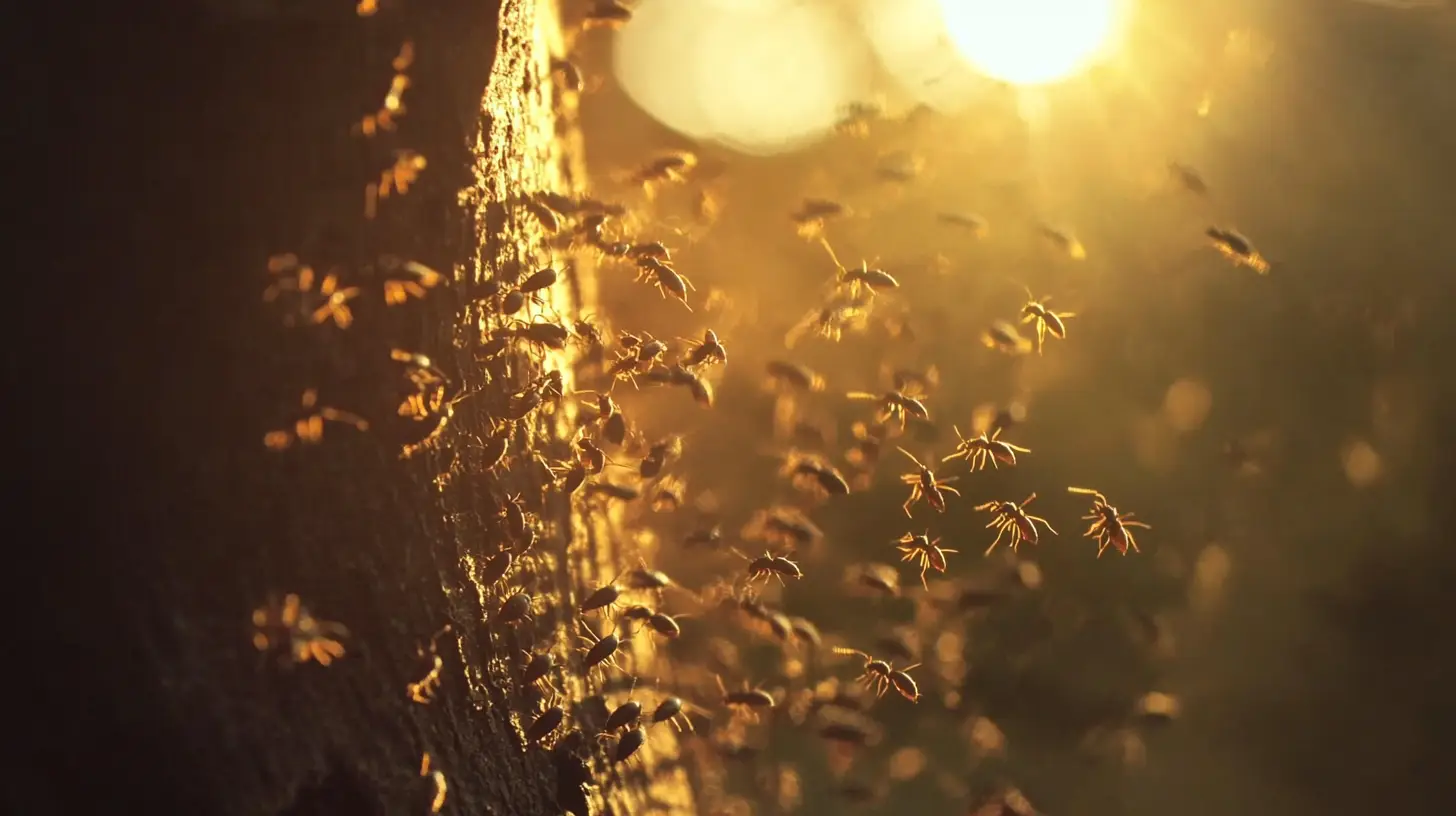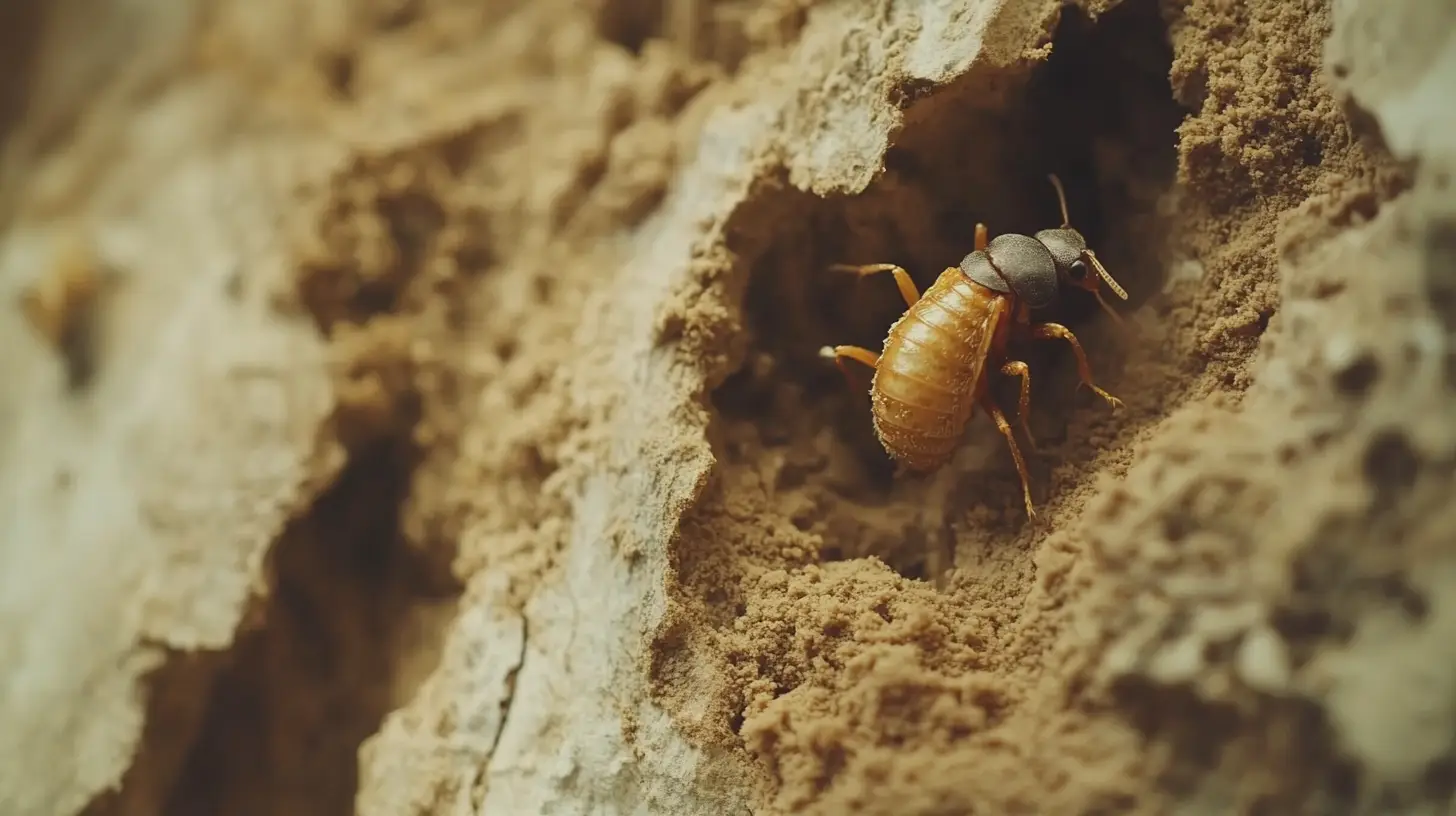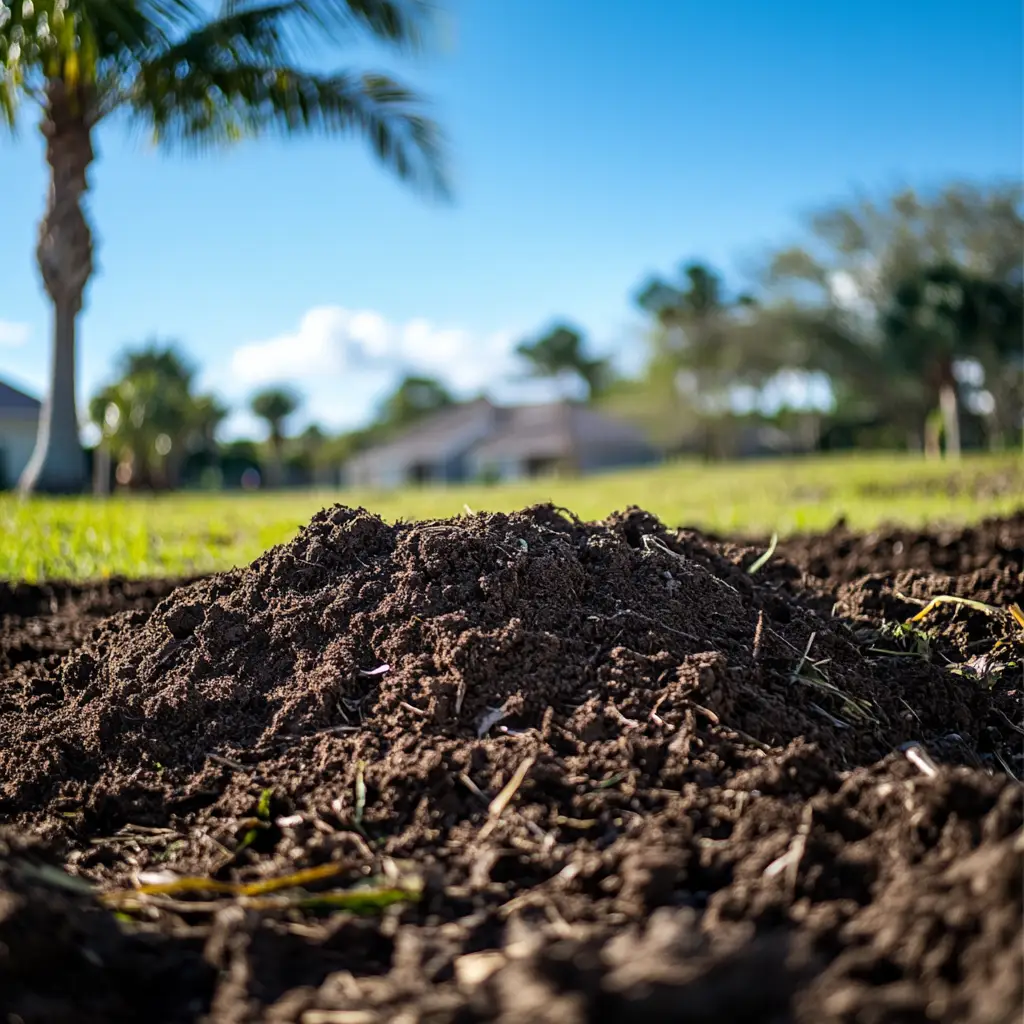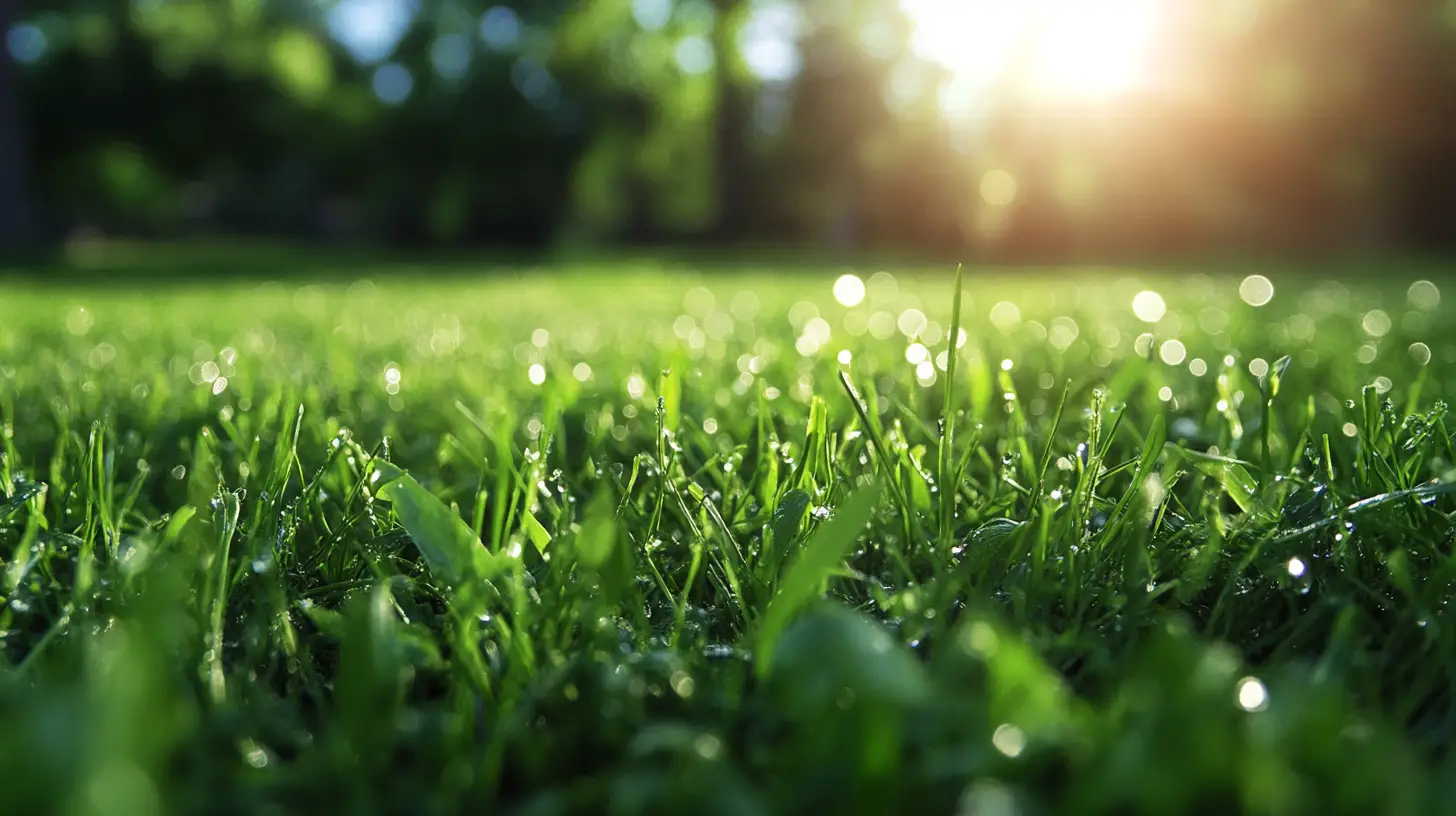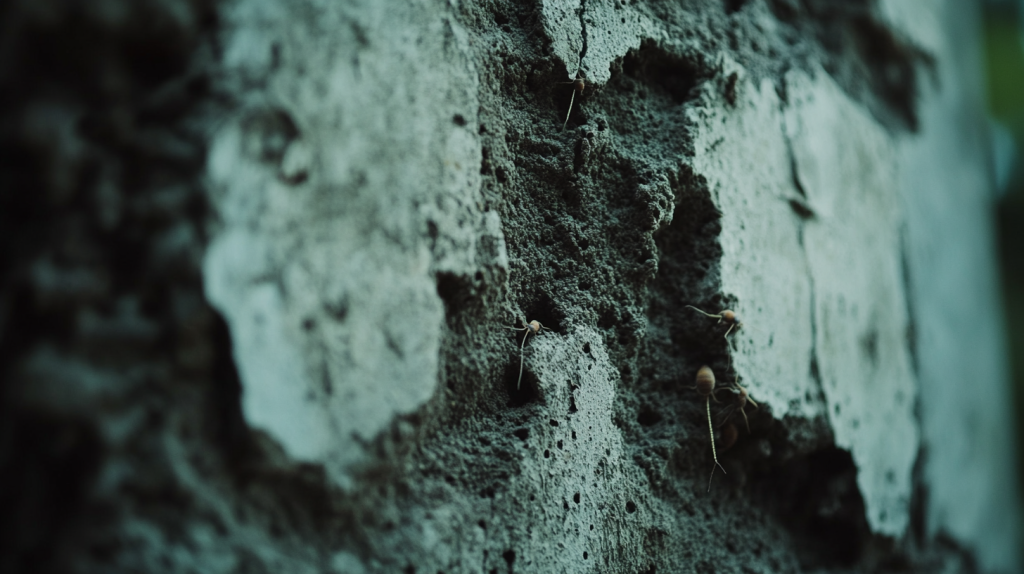
Table of Contents
Termite concrete barriers alone won’t fully protect your Lakewood Ranch home from determined termites. While these resilient pests cannot consume concrete or brick directly, they’re experts at finding alternative pathways to reach the wooden elements they crave within your structure.
Key Takeaways
- False Security: Concrete construction provides a sense of protection that can lead to complacency—regular inspections remain essential regardless of building materials.
- Hidden Pathways: Termites exploit microscopic vulnerabilities in concrete structures, including settlement cracks, unfilled block cores, and construction penetrations.
- Critical Junctions: The meeting points between concrete elements and wooden components create particularly vulnerable transition zones requiring specialized protection.
- Detection Challenges: Termite activity in concrete homes often progresses further before discovery since colonies can remain hidden within masonry voids.
- Preventative Approach: The most effective termite strategy for concrete homes combines multiple defense layers: chemical barriers, physical shields, moisture control, and routine professional inspections.
- Property Value Protection: Professional termite prevention for concrete homes in Lakewood Ranch not only prevents costly damage but also maintains your property’s value and structural integrity. Florida-Specific Risks: Our region’s high humidity, sandy soil, and year-round termite activity create unique challenges for concrete construction that require localized protection strategies.
How Termites Infiltrate Concrete Structure
Subterranean termites live in Florida’s soil and construct mud tunnels through seemingly impenetrable barriers. These persistent pests can squeeze through gaps as narrow as 1/32 inch wide—about the thickness of a credit card. Once they locate wooden components like sills, joists, or trim, worker termites build protective mud tubes to travel safely between their colony and food source without drying out.
Common Entry Points in Concrete Homes
Several vulnerabilities exist in concrete and masonry structures that termites regularly exploit:
- Cracks and joints: Settlement or shrinkage can create tiny fissures in concrete slabs, block walls, or mortar—providing termites with direct access routes.
- Hollow block cores: Many cinder blocks contain empty cavities that, when left unfilled or uncapped, become perfect termite highways leading directly to wooden framing above.
- Wood-to-soil contact: Any wooden elements touching the ground create direct termite access points, bypassing concrete barriers entirely.
- Utility penetrations: Gaps around plumbing, electrical conduits, and HVAC components often serve as bridges through concrete foundations.
- Decorative masonry: Brick or stone veneer over wood framing becomes vulnerable when soil or mulch contacts the lower edge, creating hidden termite pathways.
Warning Signs of Termites in Concrete Homes
Detecting termites early requires vigilance for these key indicators:
- Pencil-width mud tubes climbing vertical concrete surfaces
- Winged termites (swarmers) or discarded translucent wings near windows and entryways
- Bubbling paint or wallpaper with pinhole-sized openings
- Wood-colored pellet accumulations beneath baseboards or in corners
- Doors and windows that suddenly stick in their frames
- Hollow sounds when tapping wooden elements adjacent to concrete
Pay special attention to transition points between concrete and wood, including sill plates atop block walls, framing around openings in brick walls, and wooden elements in crawlspaces or attics.
Prevention Strategies for Concrete Homes
Protect your Lakewood Ranch property with these concrete-specific termite prevention measures:
- Maintain proper clearance: Keep all wooden components elevated at least 8 inches above soil level using concrete or metal supports.
- Seal foundation vulnerabilities: Fill and seal all cracks in foundation structures, grout hollow block cores, and install reinforced concrete caps atop block walls.
- Control moisture levels: Ensure proper drainage away from foundations, eliminate plumbing leaks, and maintain good ventilation in enclosed spaces.
- Remove attractants: Keep firewood, lumber, and paper products at least 30 feet from your home’s foundation and remove all wood debris from your property.
- Use termite-resistant materials: When building or renovating, incorporate pressure-treated or borate-treated wood for any elements near ground level.
Professional Termite Protection for your Concrete Home
Our specialized termite protection services for concrete and masonry structures in Lakewood Ranch include comprehensive inspections, preventative treatments, and ongoing monitoring specifically designed for the unique vulnerabilities of concrete homes.
Our expert technicians understand the complex relationship between termites and concrete structures in Florida’s challenging climate. We provide customized solutions that address your specific home’s construction details and risk factors.
Frequently Asked Questions (FAQs)
Do concrete block homes get termites?
Yes, concrete block homes in Lakewood Ranch can definitely get termites. While termites cannot eat through concrete directly, they expertly exploit tiny cracks, gaps in mortar joints, unfilled block cores, and construction penetrations to access wooden elements within the structure. Subterranean termites build protective mud tubes along concrete foundations and walls to bypass these barriers and reach the wood framing, trim, cabinets, and other cellulose materials inside your home. Regular professional inspections remain essential even for concrete block construction.
What are the problems with concrete block homes?
While concrete block homes offer excellent durability, they present several termite-related challenges. The hollow cores in concrete blocks can create hidden highways for termites to travel undetected within walls. Construction joints, utility penetrations, and settlement cracks provide entry points that are difficult to seal completely. Additionally, the perceived termite resistance often leads homeowners to neglect regular inspections, allowing infestations to progress longer before detection. The junction between concrete foundations and wooden elements (like sill plates) creates vulnerable transition points requiring special protection.
Should I worry about termites in a brick house?
Absolutely. Brick homes in Lakewood Ranch remain vulnerable to termite activity despite their masonry exterior. Termites cannot consume brick, but they readily navigate through mortar joints, foundation cracks, and the critical junction where brick meets wooden framing. Many brick homes in Florida have wooden structural elements behind their masonry veneer, providing ample food sources once termites gain entry. The increased humidity trapped by brick exteriors can actually create more favorable conditions for termite colonies. Professional inspection of brick homes should focus on foundation perimeters, crawlspaces, and areas where wood contacts the foundation.
How do you treat a block foundation for termites?
Effective termite treatment for block foundations in Lakewood Ranch typically involves a multi-layered approach:
- Liquid barrier application: We create a continuous chemical barrier by treating the soil around the entire foundation perimeter, applying termiticide at recommended rates (4 gallons per 10 linear feet per foot of depth).
- Void treatments: For hollow concrete blocks, we inject specialized termiticides into the cores and voids to eliminate hidden termite highways.
- Crack and joint sealing: We treat and seal all foundation cracks, expansion joints, and utility penetrations with specialized sealants after termiticide application.
- Bait system installation: We strategically place monitoring and bait stations around the property perimeter to intercept foraging termites before they reach your foundation.
- Physical barriers: During construction or renovation, we can install metal termite shields, stainless steel mesh, or sand barriers at critical transition points between concrete and wood.
- Ongoing monitoring: We provide scheduled inspections to ensure continued protection, as no single treatment provides permanent immunity against Florida’s aggressive termite species.


